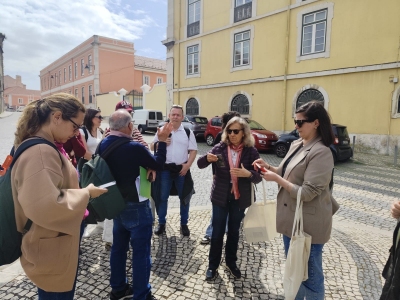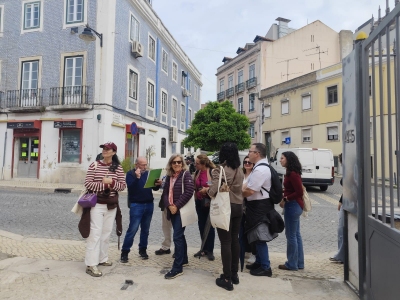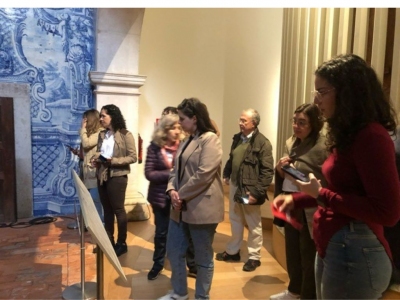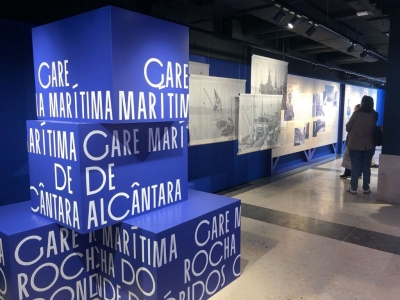Cultural Tourism students explore the western bank of the Tagus on a guided study visit
On April 12, students of the Postgraduate Course in Cultural Tourism carried out a study visit to the western riverfront of the Tagus in an initiative that sought to deepen their critical understanding of the city of Lisbon as a historical, cultural, and industrial space. Dr. Clementino Amaro led the activity, which provided a comprehensive reading of the Lisbon urban landscape, with a particular focus on its evolution and reconversion.
The route began at the National Museum of Ancient Art and continued to Alcântara, passing by the Rocha de Conde de Óbidos. Students analyzed the riverside industrial structure during this first stage, contextualizing it in the city's urban development. The visit continued with a walk between Jardim 9 de Abril and Alcântara Terra, where it was possible to observe and interpret various heritage elements, such as palaces, churches, fountains and convents, integrating different historical layers of the territory.
In the Alcântara valley, attention turned to the geomorphological and cultural reading of the landscape. Traces of human action were highlighted, from the old tide mills to the urban planning of figures such as Duarte Pacheco. The industrialization of the area, the workers' villages, and the mutualist movements were also addressed, with emphasis on the social example of the Casal Ventoso neighborhood.
The visit also included a stop in Alcântara-Mar, where the students explored the Maritime Station and the Santo Amaro Dock, reflecting on the process of converting industrial spaces into leisure areas. The visit to LX Factory reinforced this analysis, illustrating how urban renewal can revitalize former industrial areas.
The day ended with a reading about the evolution of the Junqueira area, its palaces and museums, as well as the industrial landscape visible on the other side of the Tagus. The final reflection focused on the transformation of Belém, which ceased to be an imperial symbol to established itself as a cultural hub of the city.
The study visit proved to be an enriching experience, highlighting the importance of urban reading as a fundamental tool in the appreciation and interpretation of the heritage and identity of territories.













